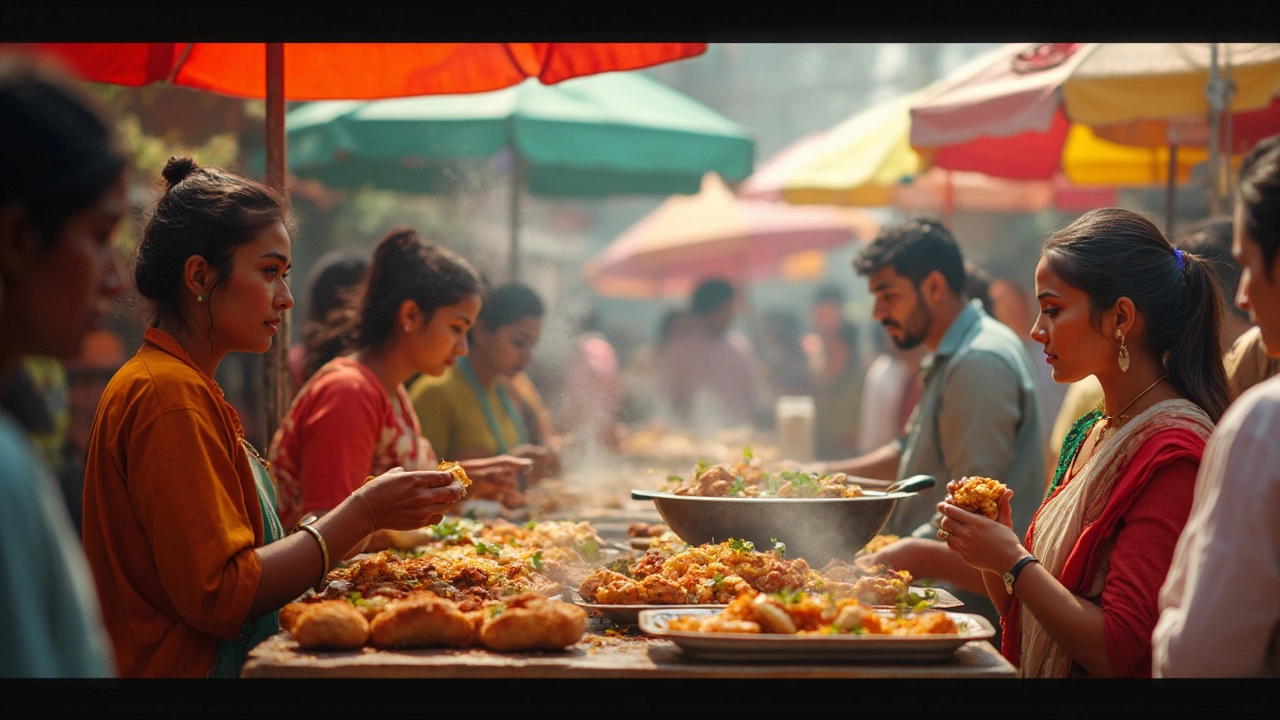Junk Food India – Everything You Need to Know
When we talk about junk food India, the indulgent, often fried, snack foods that have become a staple in Indian street cuisine and home kitchens. Also known as Indian junk snacks, it reflects a blend of traditional flavors with modern convenience. Junk food India isn’t just about taste; it shapes social gatherings, late‑night cravings, and even festival menus. The term covers everything from spicy samosas and crispy pakoras to the layered delight of Biryani served at fast‑food stalls. Biryani, a rice‑based dish layered with meat or vegetables, spices, and aromatics is a prime example of a dish many label as junk food, yet it also carries cultural weight and nutritional complexity. Understanding this mix helps you see how nutrition, the study of nutrients, calories, and health impacts and health myths, widely held but often inaccurate beliefs about food interact with everyday snack choices.
Why Indian Street Snacks Feel Irresistible
The allure of junk food India comes from a few key ingredients. First, the heavy use of oil and ghee creates a mouth‑watering crunch that signals energy‑dense food to our brains. Second, the spice blend—cumin, coriander, chili, and garam masala—activates taste receptors and releases feel‑good endorphins. Finally, the cultural habit of sharing these bites during evenings or festivals adds an emotional layer that makes each bite feel rewarding. These three factors together mean that junk food India requires both flavor intensity and social context to hit the spot. As a result, the snack culture thrives in bustling markets, railway stations, and even home kitchens where a quick pakora fry solves a hunger pang.
But the story isn’t just about cravings. Recent nutrition studies show that many Indian snacks pack a high calorie count yet also provide protein, iron, and vitamins when prepared with legumes or dairy. For instance, a chickpea‑based samosa offers more plant protein than a plain potato fry. Meanwhile, the perception that every Indian street snack is "empty calories" is a health myth that ignores these hidden nutrients. By looking at the actual ingredient list, you can separate the truly indulgent items from those that offer a nutritional edge. This analysis reveals that healthy Indian alternatives, options like baked bhujia, roasted chana, or air‑fried pani puri exist and can satisfy cravings without the extreme calorie spike.
What you’ll find in the collection below reflects this balance of taste, tradition, and truth. From deep dives into why Biryani can be both festive and calorie‑heavy, to quick fixes that make samosas lighter, each article breaks down a piece of the junk food India puzzle. Whether you’re curious about the science behind oil‑driven flavor, want to debunk common health myths, or are hunting for smarter snack swaps, the posts ahead give you practical steps and clear explanations. Let’s explore how the flavor, nutrition, and culture of Indian junk snacks intertwine, and see which tips you can try tonight.

Most Unhealthy Food in India: What You Need to Know
Discover the most unhealthy food in India and what makes it so bad for your health. Learn about popular favorites that could be ruining your diet, plus the hidden facts behind common ingredients. Find practical tips to make smarter choices even when you crave tasty treats. Get ideas for easy swaps so you can enjoy classic flavors without risking your well-being. Dive into the real risks, backed by recent trends and research.